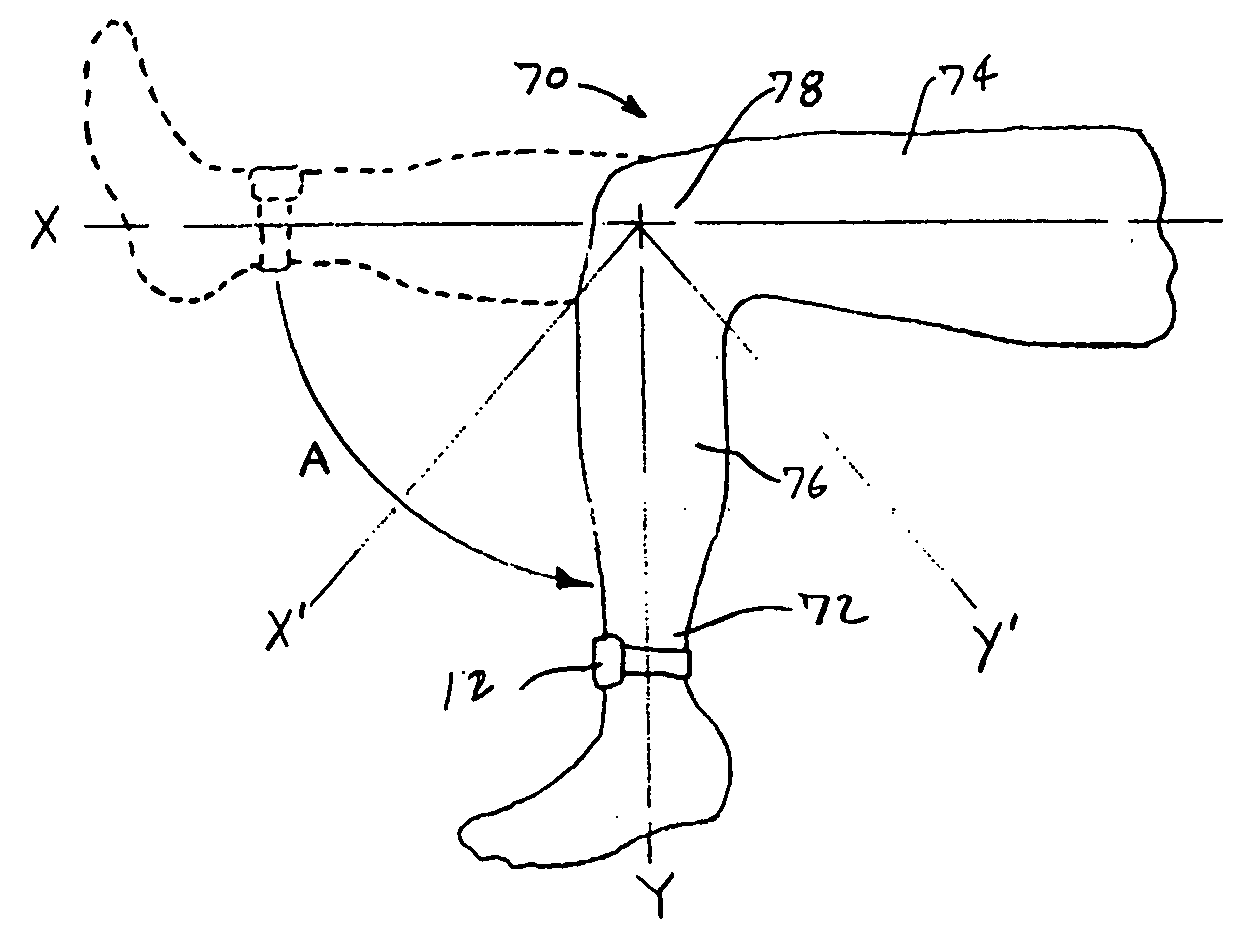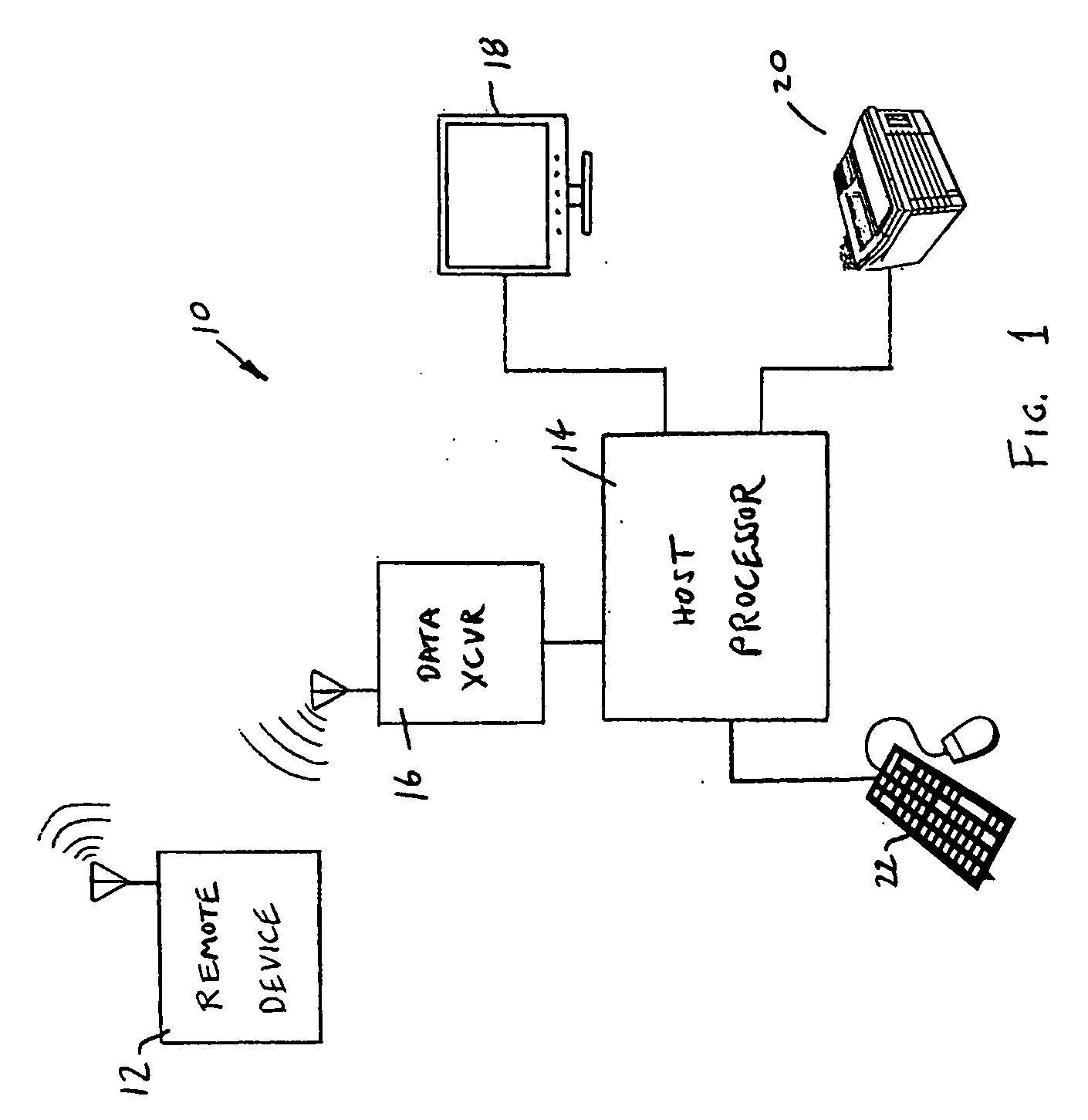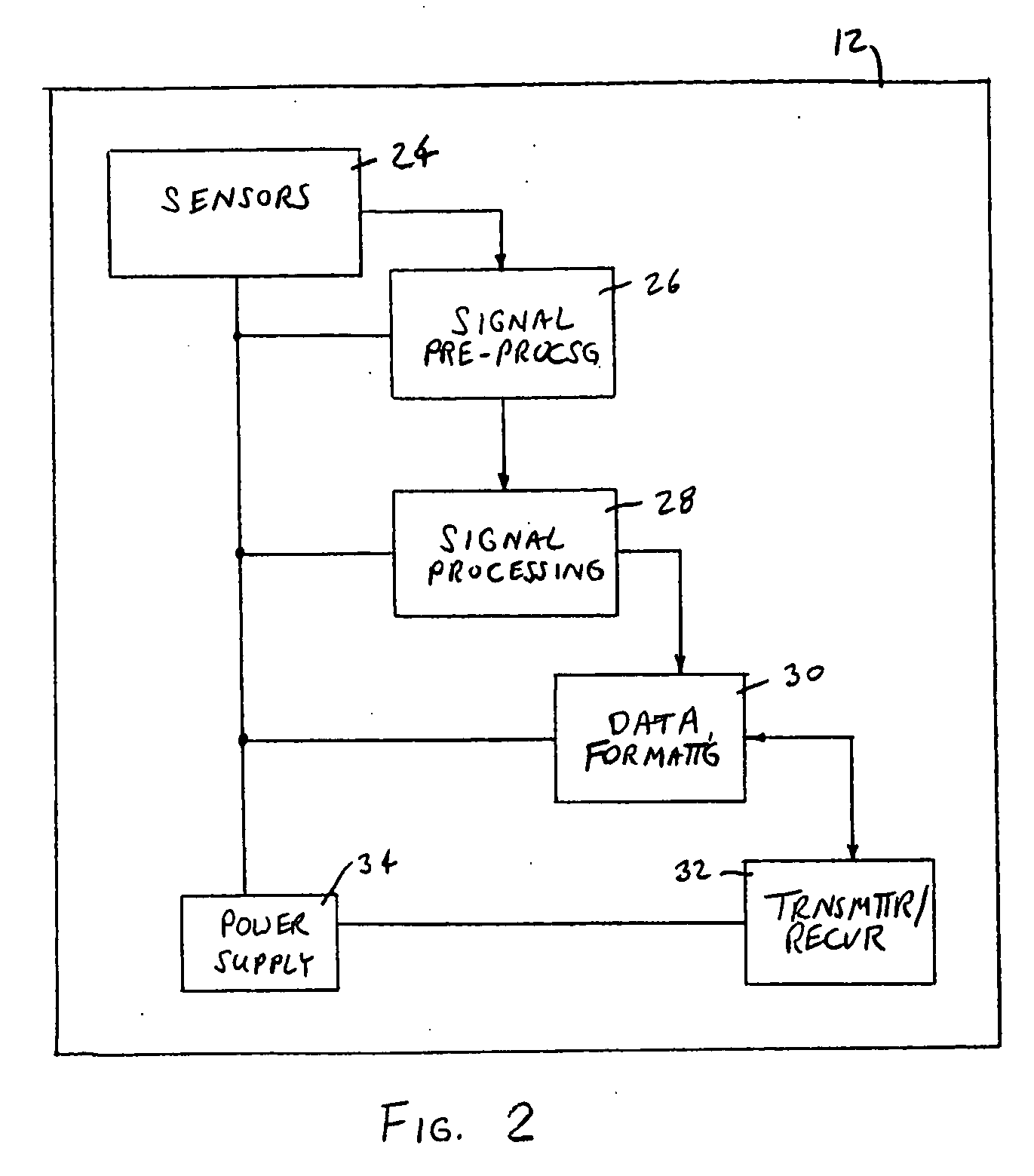Apparatus and method for evaluating a hypertonic condition
a hypertonic condition and apparatus technology, applied in the field of apparatus and methods for evaluating hypertonic conditions, can solve the problems of prone to subjectivity and variance, limited utility in reliably and effectively quantifying hypertonia and presenting data characterizing such conditions
- Summary
- Abstract
- Description
- Claims
- Application Information
AI Technical Summary
Benefits of technology
Problems solved by technology
Method used
Image
Examples
Embodiment Construction
[0024] Referring now to the drawings, and in particular to FIG. 1, there is shown a system 10 for quantifying and evaluating hypertonia in a human subject. The system 10 includes a remote device 12 and a host processor 14 having a data transceiver 16. Various peripheral devices such as a display monitor 18, a printer 20, and a keyboard and mouse 22 are operably connected to the host processor 14 to permit data input and output operations. For example, information such as subject identification, date and time, and requests for data output displays can be manually input using the keyboard and mouse 22. The input information as well as graphs and data charts of measured parameters can be displayed on the monitor 18 and printed on the printer 20.
[0025] The remote device 12 is preferably embodied as a self-contained package that can be used remotely from the host processor 14. It is preferably small and lightweight so that it can be applied to a limb of the subject to be examined. It is...
PUM
| Property | Measurement | Unit |
|---|---|---|
| angle | aaaaa | aaaaa |
| pressure | aaaaa | aaaaa |
| electric power | aaaaa | aaaaa |
Abstract
Description
Claims
Application Information
 Login to View More
Login to View More - R&D
- Intellectual Property
- Life Sciences
- Materials
- Tech Scout
- Unparalleled Data Quality
- Higher Quality Content
- 60% Fewer Hallucinations
Browse by: Latest US Patents, China's latest patents, Technical Efficacy Thesaurus, Application Domain, Technology Topic, Popular Technical Reports.
© 2025 PatSnap. All rights reserved.Legal|Privacy policy|Modern Slavery Act Transparency Statement|Sitemap|About US| Contact US: help@patsnap.com



